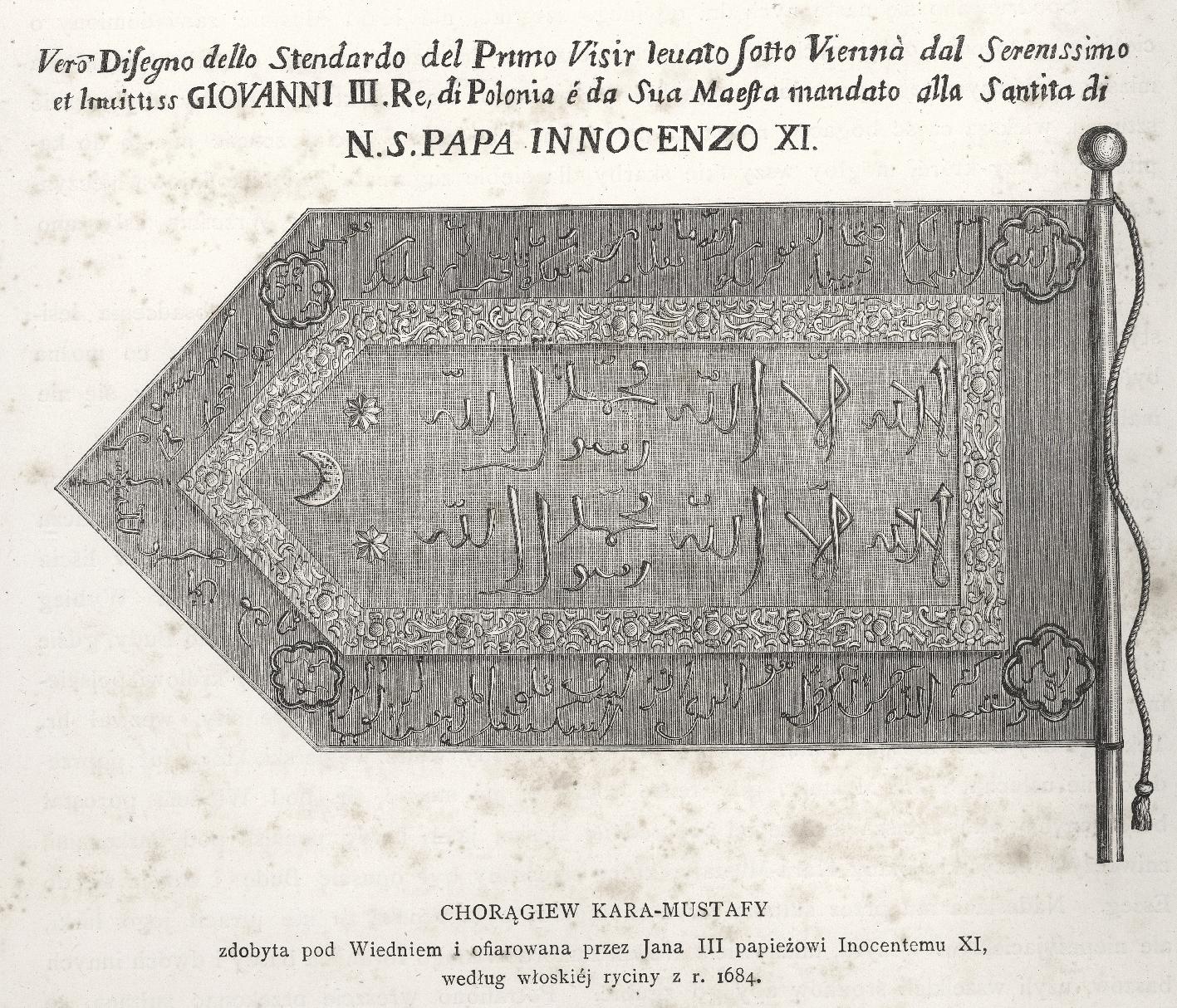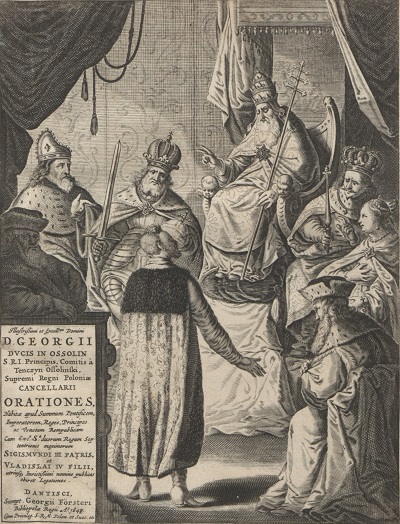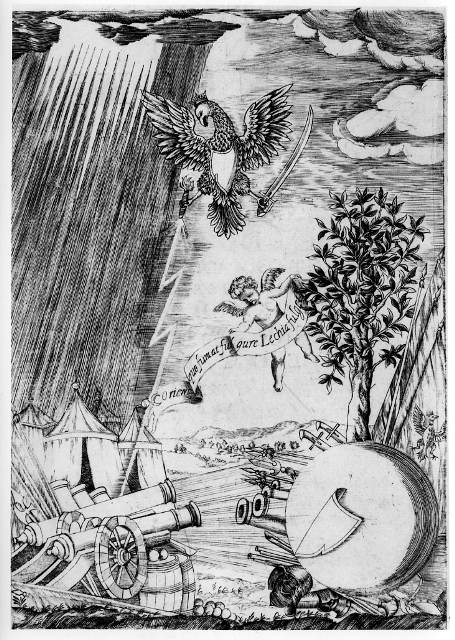Of costly Roman gifts for John III and Marie as well as royal secretary Tommas Talenti, who brought to the Pope the “banner of the Grand Vizier” won by the king in the battle of Vienna
Of costly Roman gifts for John III and Marie as well as royal secretary Tommas Talenti, who brought to the Pope the “banner of the Grand Vizier” won by the king in the battle of Vienna - Photo gallery
Tommaso Talenti, who on the 25th of September 1683 brought to Rome the Turkish banner won by John III in the Relief of Vienna, and four days later gave this trophy to Pope Innocent XI, stayed in the city on the Tiber for almost two more weeks. As the secretary and envoy of the Polish king, who was considered the main author of the military success, as well as an eye witness to the battle, he met in Rome with understandable interest. His stay became an event, described in diaries of the famous Roman diarist Carlo Cartari and the former nuncio in the Commonwealth, Galeazzo Marescotti, as well as in ephemeral prints and manuscript accounts, which were sent by post to towns of Italy and the whole Europe. Suggestive stories told by Talenti inspired folk rhymers and authors of academic poetry, they were used in first attempts to recreate the battle, and also influenced imagination of authors of various drawings, illustrating the siege and liberation of the city.
Tommaso Talenti was not present during the ceremony of hanging the „banner of the Grand Vizier” at the Vatican Basilica. Before he left Rome on the 9th of October, he went to a farewell audience granted by Innocent XI. The Pope showered him with gifts. The guest is said to have received gold and silver medals, a rosary made of precious stones, 900 scudo in coins, the title of „cavalierato di San Pietro” with the annual income of 150 scudo, and a pension in the amount of 200 scudo in demesne in Spain, as well as a gold chain worth 400 scudo. This was a very valuable item, supposedly commissioned by Clement IX in 1669 for François de Borbone-Vendôme, Prince de Beaufort, who was sent to rescue Candia and who died in 1669 in the battle won by Turkey. It is known that Talenti, in turn, offered the Pope a gold chain decorated with a medal with the portrait of John III, but it was probably a gift from the monarch himself. So the hardships of journey to Rome paid off for the royal envoy. Apart from the papal gifts, he received costly presents also from cardinal protector of Poland Carlo Barberini and his brother Maffeo Barberini, Prince of Palestrina, who gave Talenti a gold crucifix, made – as recorded by Marescotti – on a special order of Pope Urban VIII for Władysław IV Vasa, but never received by the king.
Talenti must have left Rome in a numerous escort, since – apart from the above mentioned valuables – he took with him also costly gifts sent through him to the Polish royal couple by the Pope, clergy and Roman aristocrats. The items are listed in detail in the diaries of Marescotti and Cartari. Innocent XI gave Sobieski a gold chain decorated with filigree, valued at over 800 scudo, cardinal Barberini – an emerald-studded cross worth more than 1000 scudo, and his brother, Prince of Palestrina – a rifle and two pistols, richly encrusted with gold, previously received by Cardinal Antonio Barberini from Luis XIII, as well as a gold-decorated epée worth over 200 scudo.
Prince’s wife offered Marie Casimire a case full of Spanish gloves, carafes with various perfumes, a miniature painting, six gold-embroidered fans, a pearl necklace and a small painting by Rafael (!), showing the scene of the mystical marriage of St. Catharine. Cardinal Pio gave the queen twelve dozens gloves, Marquis Nerli – a diamond jewel shaped like a rose, valued at 500 scudo, and Cardinal Lorenzo Brancati di Lauria – a box with elegant linen as well as a relic of St. Charles Borromeo, decorated with rock crystal, in a gold-embroidered sack. Marquis Nerli offered a costly ivory case full of gloves, fans and scented oils, Prelate Vidoni gave many medals, rosaries and two dozen gloves, agent of the Polish king, Scipione Zamelli – a pricey case, a Neapolitan shirt with gold embroidery and a gold clock decorated with filigree, and Prelate Martelli – a gold chain with a medal. Abbot Mondini gave the king and queen Sobieski four paintings by Carracci (!), whereas a certain Pietro Raviz offered a small diamond worth 30 scudo, and finally a Dominican friar, Priest Bianchi – costly medals and a case with holy water in a silver bottle. On this list, of particular importance are the paintings by Rafael and brothers Carracci, which later could have become part of the royal collection in Wilanów or Żółkiew.
Probably also in view of such pricey gifts, the king was very pleased with Talenti’s mission. In a letter to his wife, dated at Ryma Sombat on the 19th of November 1683, he wrote: “Talenti a fait ses affairs à Rome et dans toute l’Italie. Admittedly, the Italians are galanthoms and a nation where there is gratitude and esteem des actions héroïques”. Unsurprisingly, in some circles, adverse to Poland and its ruler, consisting mainly of supporters of the emperor, the gifts awoke much jealousy, the more so, that John III, created by the “media” as the main hero of the Vienna success, received from the Pope the title „Difensor Fidei”, confirmed by a special breve. Also that document was brought to the king by Talenti. Criticized were plans of Innocent XI, who intended to confer upon Sobieski the right to appoint cardinals, which was held by other European monarchs. It was argued that the king, as an electoral ruler, is not entitled to this privilege. Certainly a proverbial thorn in the side was the Pope’s intent, although never followed upon, to erect a statue of John III in Rome.
Literature:
G. Platania, „Rzeczpospolita”, Europa e Santa Sede tra intese ed ostilità (Saggi sulla Polonia del Seicento), Viterbo 2000, p. 297.
H. Osiecka-Samsonowicz, Polskie uroczystości w barokowym Rzymie 1587-1696, Warsaw 2012, p. 306-307.
[Il. „Muhammad’s banner, won during the Vienna expedition by King John III in the year 1683”, a lithography by Karol Stolzman, 1819; National Library of Poland]




